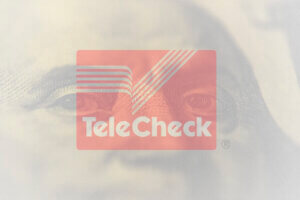Imagine your credit report as a key player in your financial journey. It’s not just a document; it holds the power to influence loan approvals, interest rates, rentals, and more.
Created by credit bureaus, your credit report tells the story of your financial reliability. Negative factors like late payments and unpaid collections complicate this story and limit your opportunities. So, what steps can you take if your narrative seems to be working against you?
Our complete guide will walk you through each stage of understanding your report, spotting errors, starting disputes for negative items, and, in the end, removing them. Join us to regain control of your finances, boost your credit score, and work towards a better financial future.
Types of Negative Entries Found on Credit Reports
Your credit report shows key facts about your financial history, and certain entries can affect your finances and your relationship with your bank. Here’s an overview of common negative items found in credit reports that potentially lead to credit damage:
- Late Payments: Missing payment deadlines.
- Collections: Unpaid/outstanding debts passed to collection agencies.
- Charge-offs: Creditors give up on uncollectible debts.
- Bankruptcies: Legal declaration of insolvency, admitting inability to repay debts.
- Foreclosures: Losing home due to non-payment.
- Repossessions: Failure to pay, resulting in item seizure.
- Tax Liens: Unsettled taxes leading to property claims.
Recognizing and understanding these entries is the start of fixing them. Each type of negative mark may affect your credit score differently and has its own removal time.
5 Steps To Remove Negative Credit Report Entries
- Obtaining Free Copies of Your Credit Reports
To eliminate negative items from your credit report, begin by obtaining free copies of your credit reports from the major credit reporting bureaus in the US—Equifax, Experian, and TransUnion.
Here’s how you can obtain them for free and review them for accuracy and negative entries:
Federal law mandates that every individual is entitled to a free annual credit report from each major credit reporting agency. You can request them by phone, by mail, or online.
Online: The most convenient way to request your free credit reports is through the official website AnnualCreditReport.com. The three major credit bureaus authorize this website to provide free credit reports. Fill out this form and proceed forward.
Update: They now offer free weekly online credit reports.
Phone: You can also request your reports by dialing the Annual Credit Report Request Service at 1-877-322-8228. Follow the automated prompts and provide the necessary information.
Mail: If you lean towards a more conventional method, you can opt for mail. Download the ‘Annual Credit Report Request form’ from AnnualCreditReport.com, complete it, and send it to the address specified on the form. Each credit bureau has its own designated address for such requests.
- Reviewing Reports for Accuracy and Negative Entries
Once you’ve obtained your free credit reports, it’s time to review them carefully. The goal is to ensure that all the information on your reports is accurate and up-to-date, including any transactions related to your bank accounts.
Additionally, you want to identify any negative entries affecting your credit score. Here’s what to look for:
Unrecognized Accounts: Scan through the list of accounts on your credit report. If you encounter an account you don’t recognize or didn’t open, it could be a sign of identity theft or a credit report error.
Important: Act promptly if you think your identity might be stolen while checking your credit report. Report the identity theft to the U.S. Federal Trade Commission (FTC), implement a credit freeze to restrict access to your credit report, and set up a fraud alert by contacting a major credit bureau (Equifax, Experian, or TransUnion).
Outdated Information: Some negative items, such as missed payments or collections, have a specific period after which they should no longer appear on your report. Ensure that outdated negative content is not lingering on your report beyond its permissible reporting time.
Incorrect Account Details: Verify that the account balances, payment history, credit limits, and account statuses are accurate. Even small errors on credit reports can result in a bad credit score.
Common credit report errors include mislabeling payments as late, retaining closed accounts as open, duplicating accounts, displaying incorrect current and non-existent outstanding balances, and presenting inaccurate personal information.
Tip: Only try to remove closed accounts with inaccurate negative information.
Duplicate Entries: Sometimes, an account might appear twice on your report, artificially inflating your debt and negatively affecting your credit profile.
- Gathering Evidence to Support Your Case
When you identify errors or inaccuracies on your credit report, especially when preparing to dispute it, it’s important to have evidence to back up your claims when you initiate the dispute process. Here’s how to gather the necessary evidence:
Receipts and Statements: If you have records of payments, statements, or receipts that contradict the information on your credit report, these can serve as strong evidence in your favor. For instance, if your credit file shows late payments, but you have proof that you made payments on time, provide that evidence.
Correspondence: If you’ve communicated with a creditor, collection agency, or credit bureau regarding a particular account, remember to keep copies of all the letters, emails, and notes from phone calls.
Identity Verification: If you spot an account you don’t recognize or suspect identity theft, gather documentation to verify your identity and demonstrate that the account doesn’t belong to you.
Dispute Letters: When you write a dispute letter to the credit bureau, ensure it’s clear and concise. Include a detailed explanation of the error, the evidence you have collected, and a request for correction or removal.
Certified Mail: When sending dispute letters and supporting documents to the credit bureau, use certified mail with a return receipt. This provides proof that you sent the correspondence and that it was received.
- Initiating a Dispute With Credit Bureaus
Once you’ve identified errors or inaccuracies in your credit reports, the next crucial step is to initiate a dispute with the credit bureaus. Initiating a dispute for incorrect information allows you to correct your credit report and potentially increase your credit score.
Here’s a brief guide on how to effectively initiate a dispute, whether online or by mail, and how to craft an impactful dispute letter:
Online Dispute
Many credit bureaus offer a convenient online platform for initiating disputes, streamlining the process for speed and efficiency. To dispute inaccurate information online, follow these steps:
Visit the official website of the credit agency responsible for the credit report you intend to challenge. Navigate to the dedicated dispute section, often labeled as “Dispute” or “Correcting Errors.”
To start the online process, enter your details, including your name, address, and Social Security number, which will give you access to your credit record.
Identify the specific accounts or items you wish to dispute from the report and explain the inaccuracies, accompanied by relevant details.
If available, utilize the option to upload supporting documents, such as receipts, statements, or correspondence that validate your dispute. Before electronically submitting your dispute, review it carefully. You can expect to receive a confirmation confirming the submission of your dispute.
Dispute by Mail
If you lean towards a more traditional method, you have the option to initiate a dispute by crafting a letter and sending it to the relevant credit bureau. Here’s how: Start by concisely writing the credit agency’s name and address.
Include essential information like your name, Social Security number, address, and a detailed explanation of the inaccuracies you’re disputing.
The Consumer Financial Protection Bureau offers this convenient resource for accessing templates and dispute forms used by the three major credit bureaus. You can find the addresses of all three credit bureaus there.
Specify the accounts or items you’re disputing and explain why you believe they’re incorrect, presenting any supporting evidence you have. Attach photocopies of documents that back up your case, such as payment records, statements, or correspondence.
To ensure a traceable record, request a return receipt after sending the dispute letter using certified mail. This will serve as proof that the credit bureau received your letter, providing you with added confidence in the dispute process.
Crafting an Effective Dispute Letter
Whether you’re disputing online or by mail, an effective dispute letter can significantly improve your chances of a successful resolution:
- Be Clear and Concise: Provide a concise and professionally worded explanation of the errors as you write the letter.
- Provide Evidence: Submit documents that support your claim, like credit card statements, copies of checks, W-2 forms, lender error confirmation letters, pay stubs, utility bills, and proof of identity (e.g., birth certificate, driver’s license). If you’ve been a victim of identity theft, provide police reports.
- State Desired Outcome: Clearly state what you want to be done, whether it’s the removal of a negative item, correction of information, or any other specific action.
- Receiving Investigation Results and Next Steps
Upon disputing, wait for the 30-day comprehensive investigation results. The outcome could verify, update, or remove information. If the credit agency doesn’t respond, the disputed item could be automatically removed.
After obtaining the results, take the next steps accordingly:
- Disputes verified: If confirmed, focus on improving your credit habits over time.
- Updates made: Review the updated report for accuracy and monitor it regularly.
- No response: Confirm the removal and continue monitoring your credit.
- Unresolved dispute: Consider resubmitting with more evidence or filing a complaint.
3 More Ways to Remove Negative Items from Your Credit Report
- Negotiating with Creditors and Debt Collectors
Talking to creditors and debt collectors can help you find a solution when dealing with negative items on your credit record. Using good negotiation tactics and getting any agreements in writing is important. This way, you can work towards removing negative items or reaching settlements.
Approaches to Negotiate
Debt Validation: When facing debt collection, begin by requesting debt validation. This involves asking the collector for proof that the debt is indeed yours and accurate. If they can’t provide adequate validation, you might have grounds to dispute or even have the item removed.
Pay-for-Delete: For unpaid debts, consider proposing a pay-for-delete arrangement. This involves offering to pay the debt in exchange for the creditor removing the negative item from your credit file, such as a collection account or late payment.
A pay-for-delete letter should include your personal details, creditor’s information, account specifics, the agreed payment, and your expectations for removing negative information from your credit report. Make sure to obtain this agreement in writing before making any payment.
Debt Settlement: Negotiate with creditors to settle the debt for a reduced amount. Often, they’re open to accepting a lump-sum payment that’s less than the total owed in exchange for considering the debt as resolved.
- Using Goodwill Letters
As previously explained, a pay-for-delete involves using money to eliminate unfavorable credit information. But, if you’ve already settled the debt, the most suitable approach is to politely request what’s known as a goodwill deletion.
Writing Goodwill Letters
Goodwill letters are a way of kindly asking the people you owe money to (for example, your credit card issuer or lender) to remove negative credit marks such as past dues in your payment history.
When writing a goodwill letter, write thoughtfully. Be open and courteous. Share your story and your efforts to correct past mistakes. If a particular situation caused your credit issues, explain how you’ve made positive changes and won’t repeat those errors.
Remember, these approaches involve conversing with the individuals you owe money. Draft straightforward, truthful letters demonstrating your commitment to enhancing your credit situation.
- Considering Professional Credit Repair Help
You may also consider getting help from credit repair agencies. They’re experts who specialize in improving credit reports and repairing bad credit. Let’s look at the benefits and drawbacks of using these agencies and some reputable agencies you can approach.
Pros of Credit Repair Agencies
- Expertise: Credit repair agencies know the ins and outs of credit reports and can guide you effectively through the process.
- Time-Saving: They handle the paperwork and communication with creditors, saving you a lot of time and stress.
- Negotiating Skills: These agencies can negotiate with creditors to improve your credit terms in a better manner.
Cons of Credit Repair Agencies
- Cost: Credit repair services aren’t free. Some of the best ones can get quite expensive.
- Results Aren’t Guaranteed: There’s no surefire way to fix credit issues. Agencies can’t guarantee success.
- Risk of Scams: Some agencies might make false promises or even be scams. It’s essential to be cautious.
Frequently Asked Question about Credit Repair: Is credit repair a simple process?
A: Repairing your credit isn’t easy. The duration needed to rebuild your credit history depends on the severity of your credit problems and the extent of their impact. The process may take months or even years of dedicated commitment.
However, professional credit repair agencies have the potential to expedite and streamline the process, making it more convenient for the affected individual.
Examples Of Reputable Credit Repair Agencies
Selecting the right credit repair agency can be challenging. Some may exceed your budget, others might lack effectiveness, and there’s always the risk of encountering scams.
After extensive research, we’ve evaluated several options and identified three reputable credit repair agencies worth considering. These agencies include creditsaint.com, thecreditpeople.com, and skybluecredit.com.
While these choices provide credit repair services, it’s crucial to do your homework. Look into customer reviews, check for industry accreditations, and cross-reference with consumer protection agencies to ensure you make an informed decision.
Tip: Consider seeking assistance from credit counseling services like credit.org (Consumer Credit Counseling Services). They provide a free start with a credit coach and offer services such as financial education, budgeting help, and personalized debt management plans.
Understanding Credit Scores, Credit Checks, and Your Rights
What Are Credit Scores?
Credit score, a three-digit number, predicts your likelihood of repaying borrowed money on time. It reflects your creditworthiness and financial behavior, helping lenders assess risk.
Higher scores signify lower risk, making accessing loans easier. Conversely, lower scores categorize you as a high-risk borrower, making financing a car with bad credit harder.
>> Read up on 10 Ways to Increase Credit Score
What Are the Types of Credit Scores Used Today?
There are several types of credit scores in the United States, but the two most widely used and recognized are the FICO® Score and the VantageScore®. These scores are used by lenders to assess an individual’s creditworthiness and are based on information from credit reports.
Here’s an overview of each:
- FICO Score:
- FICO is a credit scoring model created by the Fair Isaac Corporation, which is widely used by lenders.
- The FICO Score spans from 300 to 850, with higher scores indicating better creditworthiness.
- The score is calculated based on payment history, outstanding balances, new credit, length of credit history, and types of credit used.
- VantageScore:
- The VantageScore model was developed collaboratively by the three major credit bureaus – Equifax, Experian, and TransUnion.
- VantageScore also has a range from 300 to 850, making it comparable to the FICO Score.
- Similar to FICO, VantageScore considers factors like payment history, credit utilization, credit age, total balances, and recent credit behavior.
It’s important to note that there are variations of FICO Scores (FICO 8, FICO 9, etc.) and VantageScores (VantageScore 3.0, VantageScore 4.0, etc.) tailored to different industries and specific purposes.
It also helps to know that a credit score is composed of various factors: payment history, length of credit history, credit utilization, types of credit in use (credit mix), and new credit.
What Are Credit Inquiries, and How Do They Affect Credit Scores?
Credit checks refer to the process of reviewing an individual’s credit history and creditworthiness. Let’s look at the two main types of credit inquiries to understand how they affect credit scores: hard inquiries (hard pulls) and soft inquiries (soft pulls).
- Hard Inquiries (Hard Pulls):
- Initiated by Lenders or Creditors: Hard pulls occur when a lender examines your credit report for a credit card or loan application. This is common when applying for a credit card, personal loan, mortgage, or other forms of credit.
- Impact on Credit Score: Each hard inquiry may have a small, temporary impact on your credit score. Too many hard inquiries within a short period can be seen as a red flag and might impact your creditworthiness.
- Initiated by Lenders or Creditors: Hard pulls occur when a lender examines your credit report for a credit card or loan application. This is common when applying for a credit card, personal loan, mortgage, or other forms of credit.
- Soft Inquiries (Soft Pulls):
- Various Purposes: Soft inquiries happen when you or a third party checks your credit report for reasons other than a credit application. Examples include checking your own credit report, pre-approved credit offers, or background checks by employers.
- No Impact on Credit Score: Soft inquiries do not affect your credit score. They are visible only to you and do not impact your creditworthiness.
- Various Purposes: Soft inquiries happen when you or a third party checks your credit report for reasons other than a credit application. Examples include checking your own credit report, pre-approved credit offers, or background checks by employers.
Key takeaway: Having multiple hard credit checks in a short time raises concerns for lenders, indicating frequent credit applications and possible rejections. Hard credit checks remain on the credit report for two years but typically affect credit scores only for the first year.
Understanding The Fair Credit Reporting Act (FCRA)
The Fair Credit Reporting Act (FCRA) is a federal law, and understanding your FCRA rights empowers you to rectify credit report inaccuracies. This helps you maintain a more accurate credit report, which is crucial when dealing with banks and credit unions for loans or lines of credit. Here’s what you need to know:
Dispute Process and Timeline: The FCRA allows you to challenge inaccurate information on your credit report. Credit bureaus are required to investigate consumer disputes within 30 days.
Requesting an Investigation: To begin, send a dispute letter to the credit bureau outlining the errors and including supporting documents.
Credit Bureaus’ Responsibilities: They must verify disputed items with the creditor. If verification isn’t provided promptly, the negative item must be removed.
Privacy Protection: The FCRA restricts who can access your credit report, ensuring your information remains private and secure.
Dispute Resolution: Even if a negative item is confirmed, you can include a statement explaining your perspective alongside it.
Statute of Limitations and Your Credit
Understanding the statute of limitations and your credit is like knowing the rules of a game. This rule decides how long creditors can ask for unpaid debts, but it’s not the same as how long bad marks stay on your credit report.
There are three important things to note:
- Time-Defined Parameters: The statute of limitations says how long creditors can legally ask for money. Bad marks on your credit report, like late payments, usually stay for about seven years.
- Credit Reporting Duration: As time passes, bad marks affect your credit less. New credit actions matter more than old bad marks. Bad marks lose their power over time.
- Strategic Approach: Knowing the statute of limitations helps you make smart choices about your credit. Bad marks will go away on their own after some time, but fixing them can speed up improving your credit. You choose if you want to let them go away or if you want to deal with them sooner.
In simple terms, understanding the statute of limitations helps you make good choices about your credit. You can make a plan to fix your credit that matches your future goals.
Conclusion
In summary, removing negative items from your credit report is just the start. Rebuilding your credit is the next step, and it takes some effort. After clearing out the negatives, focus on improving your credit score by fulfilling your credit obligations.
Repairing your credit is vital for financial control. With credit monitoring, regularly check your reports to stay informed, detect inaccuracies, and address issues promptly.
It’s not just about current fixes but also about securing a better financial future, potentially unlocking better loan and credit card deals, and saving on insurance.
If you’re specifically concerned about opening new bank accounts due to negative entries in your ChexSystems reports instead, read our detailed guide: “Five Steps to Get Out of ChexSystems.”
FAQ
Q. How can I remove all negative items from my credit report?
Regrettably, if the negative information is accurate, like a valid missed credit card payment, it generally cannot be removed and typically remains on your credit reports for around seven years.
Q. What does the 609 loophole refer to?
The 609 loophole pertains to a section within the Fair Credit Reporting Act. This provision grants you the right to address inaccuracies on your credit report by submitting a disputing letter.
Q. How long does negative information stay on a credit report?
Credit reports typically retain negative information for around 7 years. Bankruptcy details may linger on your Equifax credit report for 7 to 10 years, contingent on the specific type of bankruptcy.
Q. Can I hire professionals to repair my credit?
It’s possible but not always advisable. Depending on your credit situation, hiring a credit repair company can be costly. There is also the problem of potential credit repair scams. Remember, you can often fix things on your own without paying for professional help.
Q. Do I need to pay off closed accounts?
Paying off closed accounts is generally a positive step. You shouldn’t ignore your closed accounts because they still impact your credit history. Settling outstanding balances in closed accounts is advised since it can improve your credit score over time.
Q. Do credit usage affect credit score?
Yes, credit utilization makes up 30% of the credit score and significantly affects it. Credit usage measures the ratio of outstanding credit card balances to credit limits. To maintain a positive profile, keep this ratio below 30%. Keep available credit high for a positive impact on your credit score.
Q. How to remove late payments from a credit report
You can consider writing a goodwill letter to creditors explaining any exceptional circumstances leading to late payments. Negotiating a “pay for delete” agreement may be possible, though not all creditors agree to this.
Glossary
- Credit bureau is a company/agency that collects and maintains individuals’ credit information, including credit history, payment behavior, and financial activities. Lenders use this data to assess creditworthiness when making lending decisions.
- “Collection” refers to the process by which creditors attempt to recover funds that are past due or accounts that are in default. When a borrower fails to make payments on a debt as agreed, the creditor may take steps to collect the outstanding amount. These steps may involve legal action, credit reporting, and the original creditor hiring debt collectors or third-party debt collection agencies to collect the amount on their behalf.
- Closed accounts are financial accounts, such as credit cards or loans, that have been terminated or paid off. While closed, they continue to impact credit scores by contributing to credit history length, which is a factor in various scoring models.
- Hard credit check, also called a ‘hard credit inquiry’ or a ‘hard pull’, occurs when a lender checks your credit report for a loan or credit card application. Having multiple hard credit checks in a short time raises concerns for lenders, indicating frequent credit applications and possible rejections.







